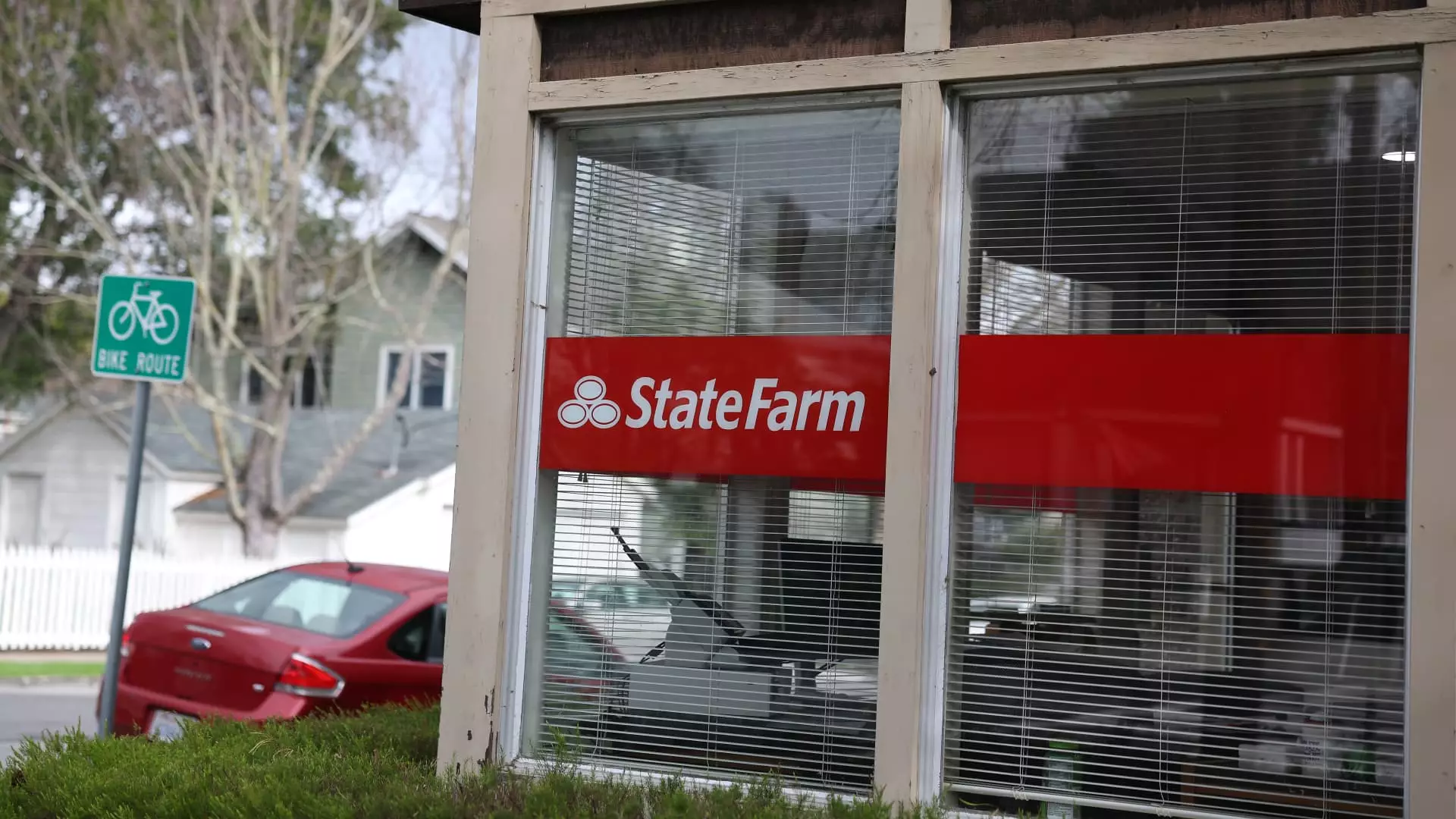State Farm, California’s largest property insurer, finds itself at a crossroads that could redefine its future amid catastrophic financial straits triggered by relentless wildfires. The company has taken its case to a hearing in Oakland, petitioning for emergency rate hikes that many argue reflect not just a response to dire financial conditions, but a potentially harmful precedent that could destabilize the insurance landscape in California. With the looming specter of increased premiums casting a shadow over nearly three million homeowners, the implications of this decision extend far beyond the balance sheets of this one corporation.
Roadblocks to recovery are continually embedding themselves into the conversation around state insurance. An alarming comparison made by the state’s Insurance Department attorney likens the situation to the Titanic—an iceberg lurking ominously on the horizon. This imagery starkly emphasizes the precariousness of the current scenario. If State Farm’s rate hikes are not approved, California could witness a mass insurance failure, leaving millions adrift without support when they need it the most.
Navigating the Aftermath of Catastrophic Wildfires
The historic wildfires that ravaged Los Angeles have left devastation in their wake, with estimated damages running into the hundreds of billions. Specific figures bandied about suggest losses could hover between $250 billion and $275 billion, making this disaster one of the costliest in recorded history—totally reshaping the insurance dynamics in the region. State Farm’s bills for approximately 12,390 wildfire claims alone have topped $2.75 billion, which is an unsustainable financial burden.
Their initial plea for a 22% rate increase has since been tempered to a still hefty 17%, indicating desperation rather than strategy. State Farm is also advocating for a whopping 38% hike on landlord coverage and 15% for renters, which raises red flags for advocates of consumer rights who argue that insurance should provide a safety net, not become an unaffordable luxury.
Insurance Under Fire: A Market in Turmoil
While the disasters of recent years have rumbled the foundations of the insurance industry, this situation has been aggravated by years of mismanagement. Prior to the wildfires, State Farm had already faced ongoing challenges due to a market riddled with uncertainty. Claims have outpaced premiums, compelling many insurers to limit coverage and turning to the state’s FAIR Plan—the insurer of last resort—for support.
Insurers are caught in a vicious feedback loop; as rates rise to offset losses, more homeowners migrate to the FAIR Plan, thereby exacerbating the strain on the state’s insurance system. The implications of those choices could push already vulnerable homeowners into a corner, with many forced to choose between crippling insurance costs and underinsured status.
The specter of abandoning policyholders continues to deepen financial instability for insurers like State Farm. With the company halting new policies and planning significant non-renewals, the crisis reflects a failure not solely in corporate strategy but in systemic state oversight. The consumer perspective is tragically overlooked in these negotiations as corporations scramble to protect their own financial viability.
Your Insurance, Your Choice: Advocating for Fairness
Amid this tumultuous landscape, entities like Consumer Watchdog are standing up for the rights of consumers, arguing that an increase in rates lacks transparency and justification. Their skepticism is warranted; after all, a drop in requested rate hikes from 22% to 17% reads more as a reactive measure than a carefully constructed rationale. This inconsistency raises questions about how corporate decisions are made, and who these decisions ultimately serve.
State and federal regulators must take a rigorous approach to safeguard against collateral damage to millions of homeowners. Janet Ruiz from the Insurance Information Institute correctly posits that a sustainable strategy is imperative to stabilize the marketplace. However, if substantial reforms aren’t introduced promptly, the fear of systemic collapse will continue to loom large.
The broader implications of this hearing extend beyond State Farm—they paint a picture of an industry grappling with the fallout of climate change, ineffective policies, and profit-driven motives overriding the need for access to essential protections. Insurers’ financial health must not come at the cost of consumers who, through no fault of their own, find themselves navigating a perilous path in these unprecedented times.
In a world where natural disasters are becoming the new norm, proactive measures need to be taken—including scrupulous scrutiny of rate increases—to ensure that personal finance does not collide with public need. It’s time for a real conversation about how to balance the needs of insurers and the needs of the insured, before millions are left out in the cold.

Leave a Reply